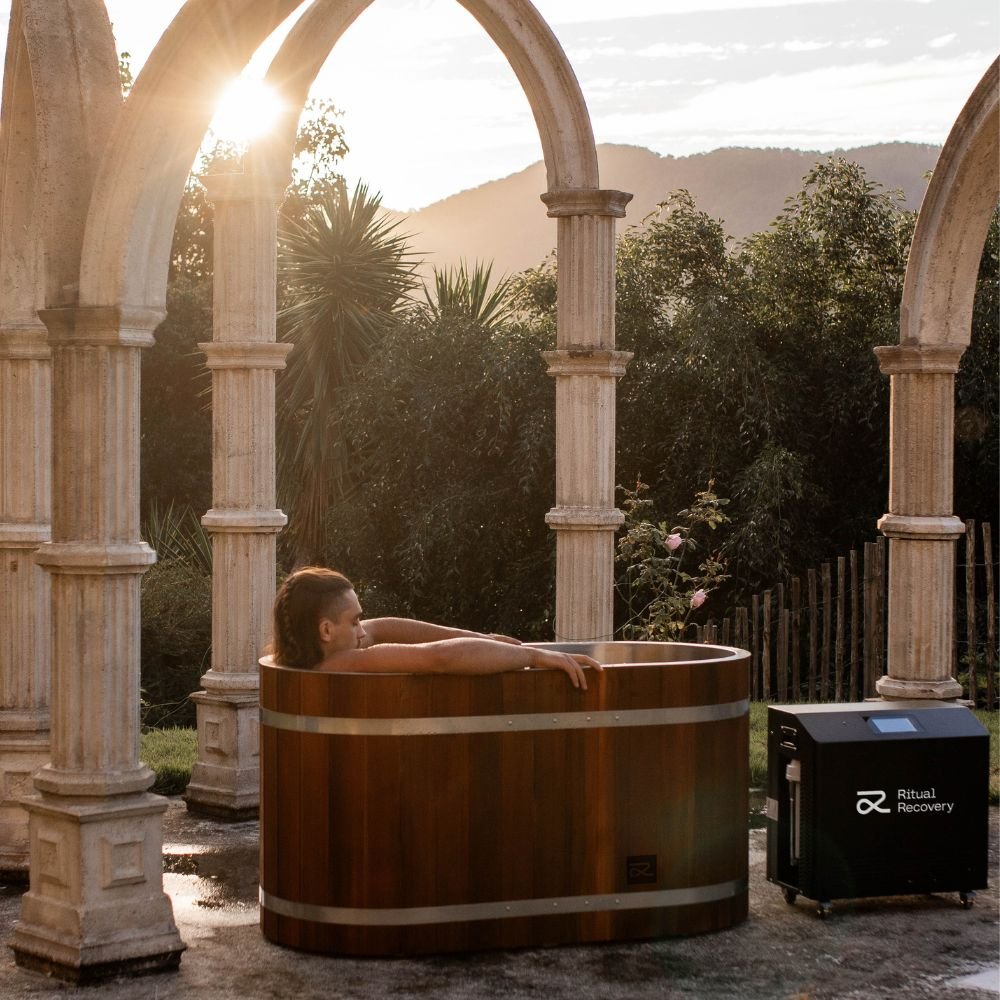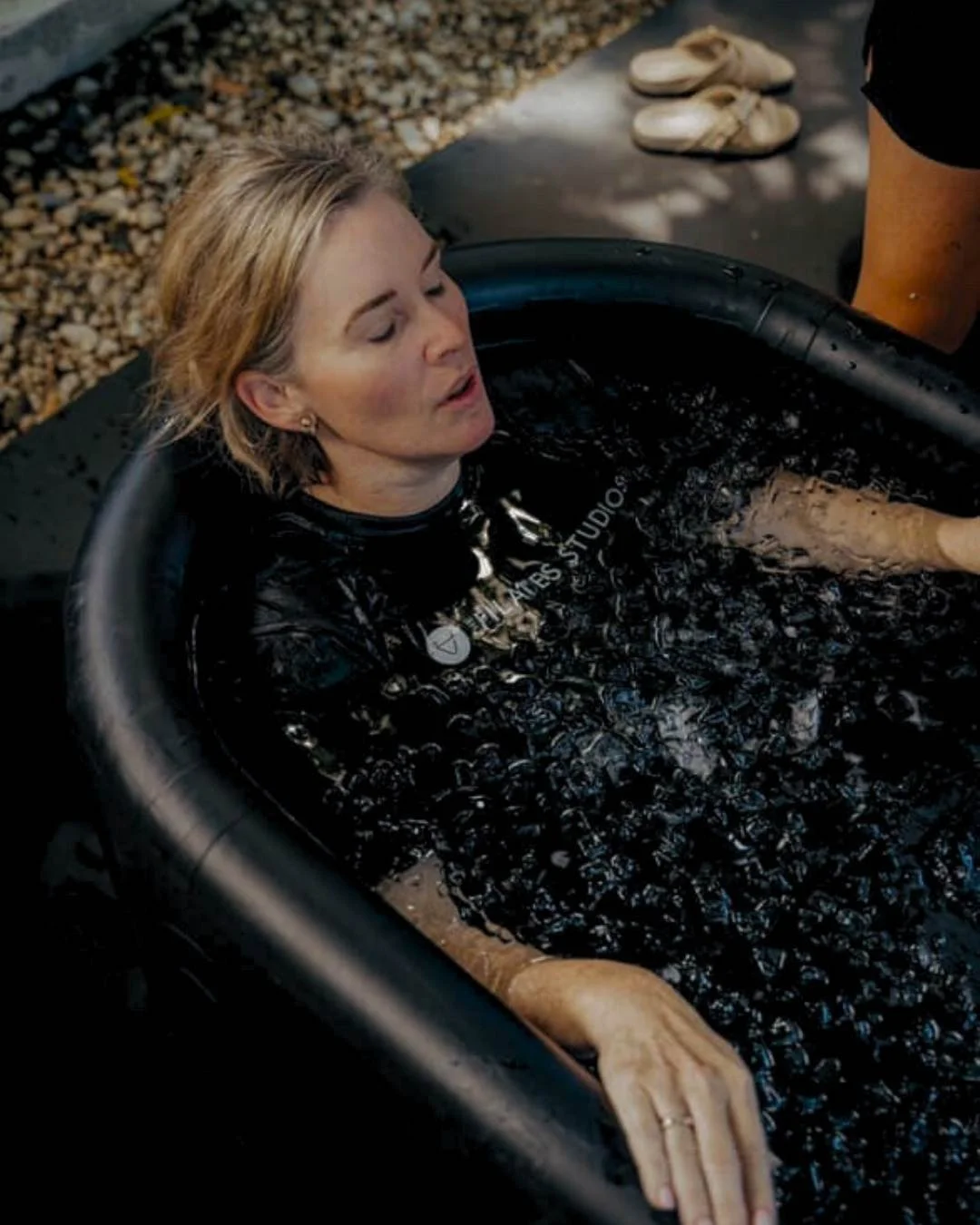
Ready to recover?
Your Guide to Using Your Sauna and Ice Bath.
Sauna and Ice Bath Protocols
Recovery looks different depending on your goal, and so should your protocol.
Whether you're aiming to reduce inflammation, sharpen focus, improve sleep, or build mental resilience, the combination of ice baths and saunas offers proven physiological benefits. From elevating dopamine and heat shock proteins to regulating your nervous system and enhancing cardiovascular health, these tools are powerful when used with intention.
This page is your guide to goal-specific protocols: science-backed, practical, and easy to follow. Each protocol outlines the optimal temperature, timing, duration, and frequency for outcomes like muscle recovery, stress relief, hormone balance, and more, all designed to work seamlessly with Ritual Recovery products.
No guesswork. Just effective, research-driven rituals to support how you want to feel and perform.
ICE BATH PROTOCOLS
1. Mental Resilience & Mood Regulation
Why: Cold exposure stimulates norepinephrine and dopamine release, activating the prefrontal cortex and improving focus, motivation, and emotional regulation. This protocol helps reset the nervous system and build stress tolerance.
Protocol:
Temperature: 5–10°C (41–50°F)
Duration: 1–3 minutes per round
Frequency: 3–4x/week
Rounds: 2–3 rounds (optional rest in between)
Best Time: Morning or mid-day. Avoid within 3 hours of bedtime due to dopamine stimulation.
Progression: Start at 12°C for 2 minutes and lower by 1°C per week as tolerance builds.
Cautions: Avoid if you have cardiovascular disease, arrhythmia, Raynaud's syndrome, or are pregnant.
Key Studies:
Huberman, A. (2023). The Science of Deliberate Cold Exposure. Huberman Lab.
Søberg, S. et al. (2021). Human Physiological Responses to Cold Exposure. Cell Reports Medicine.
2. Post-Exercise Recovery
Why: Cold water immersion reduces inflammation, muscle soreness, and oxidative stress post-exercise by constricting blood vessels and lowering tissue temperature.
Protocol:
Temperature: 10–15°C (50–59°F)
Duration: 5–10 minutes
Frequency: After high-intensity or resistance training days only
Best Time: Immediately or within 2 hours post-exercise
Progression: Reduce time as your recovery capacity improves; prioritize consistent exposure over intensity.
Cautions: May blunt hypertrophy if used immediately post-strength training (use on cardio or recovery days).
Key Studies:
Ihsan, M. et al. (2016). Post-Exercise Cold Water Immersion Benefits Are Exercise Dependent. Frontiers in Physiology.
Peake, J.M. et al. (2017). Inflammation and Muscle Damage Following Endurance Exercise. Journal of Applied Physiology.
3. Sleep & Nervous System Reset
Why: Cold exposure stimulates parasympathetic rebound post-immersion, improving HRV and helping the body shift from sympathetic dominance to a calm, recovery state.
Protocol:
Temperature: 10–12°C
Duration: 5–8 minutes
Frequency: 2–4x/week
Best Time: Evening, 1–2 hours before bed (followed by warm clothes)
Progression: Increase duration slowly; remain in until shivering begins, then exit.
Cautions: Avoid if cold-sensitive, or if you have trouble falling asleep after sympathetic activation.
Key Studies:
van der Poel, M. et al. (2020). Cold Water Immersion and Sleep Quality. Journal of Thermal Biology.
Hoekstra, S. et al. (2023). Physiological Rebound from Brief Cold Exposure. Sleep Medicine Reviews.
SAUNA PROTOCOLS
1. Longevity & Cardiovascular Health
Why: Regular sauna use lowers blood pressure, improves endothelial function, and reduces all-cause mortality by increasing heart rate and vascular flexibility.
Protocol:
Temperature: 70–90°C (158–194°F)
Duration: 15–20 minutes
Frequency: 4–7x/week
Best Time: Anytime, ideally post-exercise or early evening
Progression: Start with 10 min at 60°C, increase temp and time gradually
Cautions: Hydrate well. Avoid if pregnant or if you have hypotension or cardiovascular instability.
Key Studies:
Laukkanen, T. et al. (2018). Sauna Bathing Is Associated with Reduced Risk of Fatal Cardiovascular Events. JAMA Internal Medicine.
Lee, E. et al. (2022). Sauna Use and All-Cause Mortality. Mayo Clinic Proceedings.
2. Muscle Recovery & Inflammation
Why: Heat increases blood flow, delivers nutrients to muscles, and activates heat shock proteins that repair damage and reduce inflammation.
Protocol:
Temperature: 75–85°C
Duration: 15 minutes
Frequency: 3–5x/week
Best Time: Post-workout or on rest days
Progression: Add a contrast session (sauna > cold plunge > rest > repeat)
Cautions: Avoid overheating; drink electrolytes if using sauna frequently.
Key Studies:
Racinais, S. et al. (2017). Heat Therapy and Recovery from Exercise. European Journal of Applied Physiology.
Rhonda Patrick (2020). Sauna Use and Muscle Recovery. FoundMyFitness.
3. Pre-Sleep Wind Down
Why: A temporary rise in body temperature leads to a compensatory drop after exiting the sauna, triggering melatonin release and deeper sleep.
Protocol:
Temperature: 60–70°C
Duration: 10–15 minutes
Frequency: 3–4x/week
Best Time: 1.5–2 hours before sleep
Progression: Combine with light stretching or breathwork
Cautions: Avoid if heat-sensitive or prone to insomnia
Key Studies:
Haghayegh, S. et al. (2019). Thermal Regulation and Sleep Onset. Sleep Medicine Reviews.
Buguet, A. et al. (2015). Core Body Temperature and Sleep Cycles. Journal of Sleep Research.
GENERAL SAFETY GUIDELINES
Always consult a healthcare provider before beginning cold or heat therapy if you have pre-existing conditions.
Hydration: Maintain electrolyte balance with sodium, potassium, and magnesium, especially with sauna use.
Supervision: Never use an ice bath or sauna alone if you're new to the protocol or prone to fainting.
Sauna and Ice Bath Protocols FAQs
-
For most goals, start at 10–15°C. As your tolerance improves, you can reduce the temperature to 5–10°C for greater physiological benefits. Always prioritise gradual exposure and safety.
-
It depends on your goal. For mental resilience, 1 to 3 minutes is effective. For muscle recovery, aim for 5 to 10 minutes. Exit the bath before intense shivering or numbness sets in.
-
For mood and mental clarity, 3 to 4 times per week is ideal. For post-training recovery, use it after intense sessions. For sleep support, aim for 2 to 3 sessions per week in the evening.
-
Both options can be beneficial. Use the sauna after training for muscle recovery and relaxation. For cardiovascular and longevity benefits, use it regularly, even on rest days.
-
Yes. This is called contrast therapy. A simple format is: sauna for 15 to 20 minutes, cold plunge for 2 to 3 minutes, rest, then repeat 1 to 3 rounds. It supports circulation, recovery and mental reset.
-
Sauna can be used most days if you're well hydrated and pay attention to your body's signals. Ice baths are typically best used 3 to 5 times per week, depending on your goals.
-
Morning or early afternoon is ideal, as cold exposure elevates dopamine and alertness. Avoid using it just before bed unless followed by calming breathwork or sauna use.
-
Cold exposure immediately after strength training may blunt muscle gains. To avoid this, use ice baths on cardio or recovery days, or wait several hours after lifting before using cold therapy.
-
A quick rinse before helps keep the sauna clean and removes skin products. After the sauna is optional, some people prefer to let the heat effects linger, especially before cold immersion.


